Top 10 Reads for Summer 2018
Every month, Amazon staffers sift through hundreds of new books searching for gems. Here’s what Amazon editor Chris Schluep chose especially for Post readers this June.
Fiction
The Outsider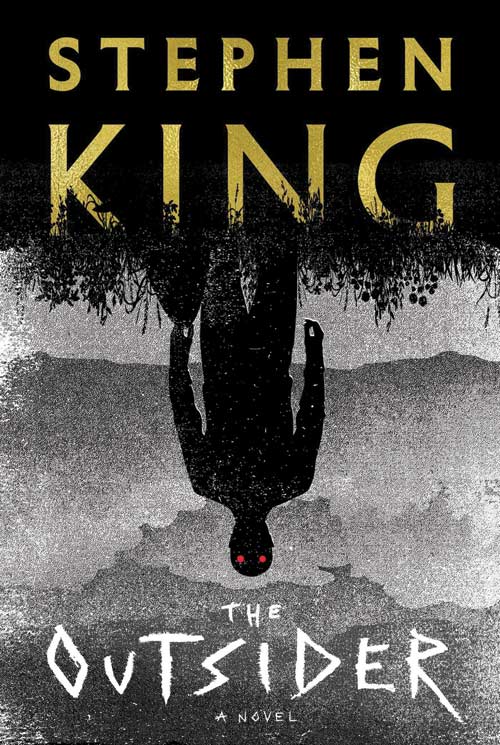
When a boy is found murdered in the town park, all signs point to Terry Maitland, a pillar of the community. King takes us on a suspenseful, shocking investigation of what really happened.
Scribner
The Perfect Couple
by Elin Hilderbrand
Hilderbrand’s Nantucket novels may be the perfect summer reads. In her latest, she sets out a lavish wedding with one hitch: The bride-to-be has been found dead in Nantucket Harbor.
Little, Brown, and Co.
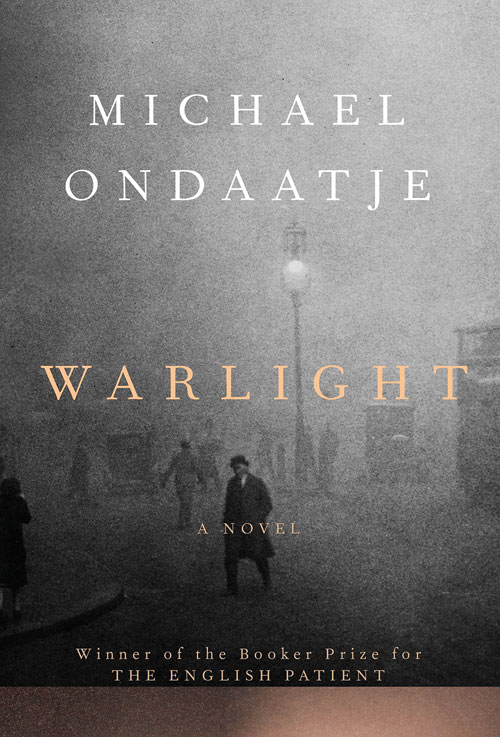 Warlight
Warlight
by Michael Ondaatje
A moving novel set in London during the decade after WWII, featuring a 14-year-old boy and his older sister, by the author of The English Patient.
Knopf
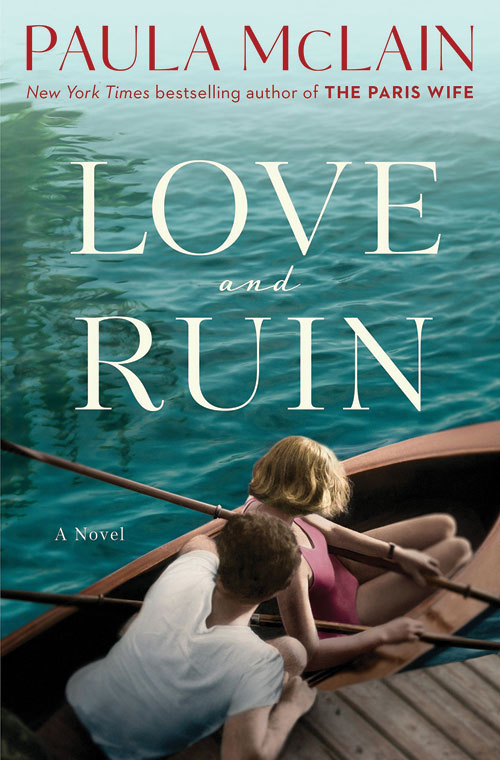 Love and Ruin
Love and Ruin
by Paula McLain
The author of The Paris Wife returns to the subject of Ernest Hemingway, turning her focus on his passionate, stormy marriage to Martha Gellhorn.
Ballantine Books
 Florida
Florida
by Lauren Groff
From the celebrated author of Fates and Furies and The Monsters of Templeton, a collection of perceptive and deeply moving short stories, all set in Florida.
Riverhead Books
Nonfiction
 How to Change Your Mind
How to Change Your Mind
by Michael Pollan
The Omnivore’s Dilemma’s author set out to research psychedelic drugs and consciousness, he hadn’t planned to write such a personal book, an elegant blend of science, memoir, history, and medicine.
Penguin
 Barracoon
Barracoon
by Zora Neale Hurston
In 1927 and again in 1931, Hurston went to Plateau, Alabama, to interview Cudjo Lewis, one of the last known survivors of the slave trade. This is his story.
Amistad
 The Strange Case of Dr. Couney
The Strange Case of Dr. Couney
by Dawn Raffel
A hundred years ago, hospitals couldn’t save premature babies. But on boardwalks and at World’s Fairs, a strange carnival showman saved the lives of thousands of infants. A compelling historic mystery uncovered.
Blue Rider Press
 Into the Raging Sea
Into the Raging Sea
by Rachel Slade
On the first of October 2015, Hurricane Joaquin barreled into the Bermuda Triangle and swallowed the container ship El Faro whole. This maritime classic explores the events leading up to that tragedy.
Ecco
 Robin
Robin
by Dave Itzkoff
The New York Times culture reporter has written the definitive biography of Robin Williams, one of America’s most beloved and misunderstood entertainers
Henry Holt
Summer Road Trips: Bookish Travel
The call of the open road is as booming as ever. As far as domestic leisure travel is concerned, more Americans are opting to go by way of the automobile. Whether it’s due to the flexibility of packing heavy and stopping at will along the way or the nostalgia of highway getaways, road trips are back!
To satiate your bookworm wanderlust, take the great American road trip inspired by great American literature.
1. Walden Pond

The site where transcendentalist Henry David Thoreau spent two years in a log cabin is only a half-hour drive from Boston. The pond once hosted an amusement park with concessions, swings, a dancing hall, and a baseball diamond that burned down in 1902, but now all that remains is a replica of Thoreau’s cabin. The grounds are a Massachusetts state park perfect for swimming, hiking, and contemplating “the tonic of wildness.”
Read “An Unlikely Hero in the Fight for Personal Liberty”
2. Amherst

The property on which Emily Dickinson was born and spent most of her life as a recluse is a portal to the past. Though a prolific poet, Dickinson published very little during her lifetime. It was on this property in Amherst, Massachusetts that she wrote scores of short, solemn poems that would later be acclaimed for their value to literary scholarship. Both Dickinson houses serve as museums of the prominent family, and the gardens on the property grow the same flowers and shrubs that featured prominently in Dickinson’s poetry.
3. Harlem

The Manhattan neighborhood known for an African-American artistic flourishment in the 1930s and ’40s was home to literary greats like Langston Hughes, Richard Wright, and Claude McKay. Langston Hughes’s longtime home, now in the National Register of Historic Places, is the site of an arts collective, and Madam C.J. Walker’s building is now a public library branch. The Schomburg Center for African-American Culture, once the site of the American Negro Theater, hosts a large collection of books and artifacts pertaining to the Harlem Renaissance.
Read Langston Hughes in the Post
4. Eatonville
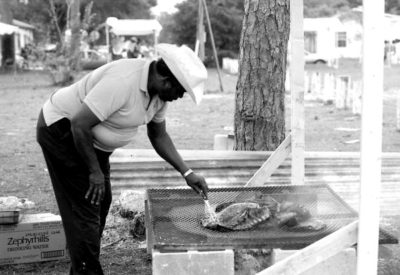
Eatonville, Florida was the home of Zora Neale Hurston as well as the inspiration for much of her work centering around the African-American experience in the South. Each year, The Zora! Festival of the Arts and Humanities celebrates the author’s life with concerts and presentations on the themes of Hurston’s work. A previously unpublished manuscript by Hurston, based on her interviews with a man who came to the country on a slave ship, was recently released after 90 years in the dark.
Read “The Conscience of the Court” by Zora Neale Hurston
5. Key West

Eccentric and lavish, the French Colonial house of Ernest Hemingway sits a few blocks from the southernmost point of the continental U.S. Driving to Key West grants drivers at once stunning views and terrible traffic, and the Hemingway House offers a glimpse into the quirky life of one the country’s most talented writers. He loved his polydactyl cats (the descendants of which still roam the house), and he built a backyard pool at a time when it would have cost over 300,000 in today’s dollars.
6. Monroeville
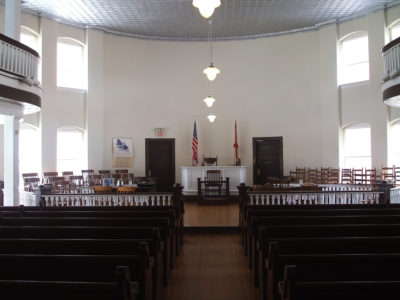
The “literary capital of Alabama” was home to both Truman Capote and Harper Lee (they were neighbors), and it inspired the southern settings of their fiction. Maycomb, the segregated setting of To Kill a Mockingbird, was practically modeled on Monroeville, and each year the town’s theater troupe stages the play adaptation. The first half is played in an amphitheater, and the second half takes place inside the town’s old courthouse. The same courthouse houses a museum featuring Capote’s old letters and childhood possessions.
Read “Capote Writes for the Post”
7. Indianapolis
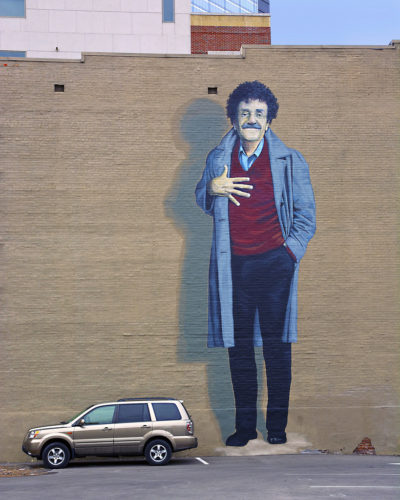
Kurt Vonnegut, Jr. wrote bountifully of his hometown of Indianapolis, “where common speech sounds like a band saw cutting galvanized tin,” and they’ve memorialized him with the Kurt Vonnegut Museum and Library. You can walk down the same streets as the fictional Kilgore Trout and look up at buildings designed by Vonnegut’s father and grandfather, Kurt Vonnegut, Sr. and Bernard Vonnegut.
Read “Vonnegut Lives!”
8. Hannibal

Samuel Langhorn Clemens’s childhood town sits on the Mississippi River, where his work on steamboats gave him his pen name, Mark Twain. The name adorns a substantial amount of attractions in Hannibal, Missouri, too: the Mark Twain Boyhood Home and Museum, the Mark Twain Lighthouse, Mark Twain Cave. You can even ride on the Mark Twain Riverboat for a dinner cruise.
Read “The Surprising and Familiar Mark Twain”
9. Red Cloud

“I wanted to walk straight on through the red grass and over the edge of the world, which could not be very far away,” Willa Cather wrote of the western prairie. The O Pioneers! and My Ántonia author is memorialized with 600 acres of never-before-plowed prairie near her childhood home in Red Cloud, Nebraska. The native grasses and wildflowers return visitors to an untouched version of the Great Plains.
10. Salinas

John Steinbeck molded the working class and migrant characters of his stories from his experiences working on ranches outside his hometown, Salinas, California. The house Steinbeck grew up in stands at the center of town just a few blocks from the National Steinbeck Center museum. Although the author moved away young and travelled often, Salinas Valley is so prevalent in his fiction that the area is often called “Steinbeck country.”
Read “Why Steinbeck Almost Didn’t Win the Nobel Prize”
Zora Neale Hurston and the Cowboy
Although Zora Neale Hurston is best known for her fiction — and especially for her novel Their Eyes Were Watching God — the luminary of the Harlem Renaissance was educated at Barnard College as an anthropologist. In 1942, she interviewed the Florida cowboy Lawrence Silas, a black man who, during the Jim Crow era, had earned the respect of those in the beef industry for his fairness and skill.
In “Lawrence of the River,” published in the Post on September 5, 1942, Hurston calls Silas’ story “a sign and symbol of the strength of the nation” that “helps to explain our history, and makes a promise for the future.”
On full display in the story is Hurston’s knack for catching the rhythm and cadence of the Southern dialect. How Silas speaks — and how Hurston reproduces that speech — reveals as much about his personality as what he says.
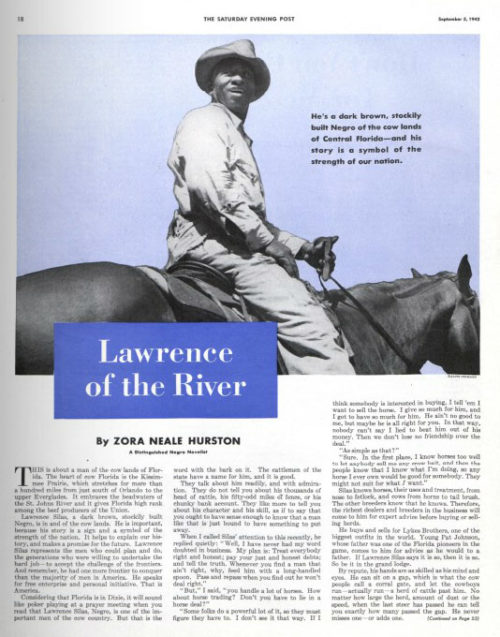
Famous Contributors: Zora Neale Hurston
 The Saturday Evening Post‘s celebration of Black History month continues with this Famous Contributor’s column focusing on anthropologist and novelist Zora Neale Hurston.
The Saturday Evening Post‘s celebration of Black History month continues with this Famous Contributor’s column focusing on anthropologist and novelist Zora Neale Hurston.
Like fellow famous contributor Langston Hughes, Hurston rose to prominence during the Harlem Renaissance, where she became respected as one of the top authorities on Black culture. Her unique blend of fictional prose and anthropological science led her to become one of the first widely-celebrated African-American writers. In 2002, scholar Moleti Kete Asanti named her one of the 100 Greatest African Americans; her life is currently celebrated every year at “Zora Fest” in Fort Pierce, Florida; and her home is a National Historic Landmark.
Born in 1891, Hurston’s belief that there could be more equality in America was instilled at a young age. She grew up Eatonville, Florida—one of the first incorporated African-American communities in America—and her experiences in the self-sufficient city convinced her that blacks could indeed live successfully if free from the constraints and prejudices of white society. She would refer to Eatonville as a Utopian community in much of her writing later in life. Today, the city celebrates Hurston’s legacy with another festival, the annual Zora Neale Hurston Festival of the Arts and Humanities.
People first began to take note of Hurston’s talent when she was enrolled at prestigious Howard University, but it was when she moved to Harlem that her popularity really began to take hold. Her background in anthropology provided endless material for her writing, as her academic travels took her to places such as Haiti, Jamaica and throughout the South, and her novels reflected African-American folklore that many Americans had never been exposed to. Books written by Hurston such as Their Eyes Were Watching God and Jonah’s Gourd Vine are remembered as all-time greats.
While considered one of the preeminent sources on African Americans in the 30s and 40s, her viewpoints would later cause her to fall out of favor with many contemporaries. She believed the old mantra of “separate but equal” could actually succeed and opposed such civil rights landmarks as the “Brown vs. Board of Education” decision and FDR’s New Deal, which caused her to become unpopular in her later years.
Below is her short story “The Conscience of the Court,” which appeared in the Post in 1950.
[embedpdf width=”700px” height=”900px” ]http://www.saturdayeveningpost.com/wp-content/uploads/satevepost/19639593.pdf[/embedpdf]
